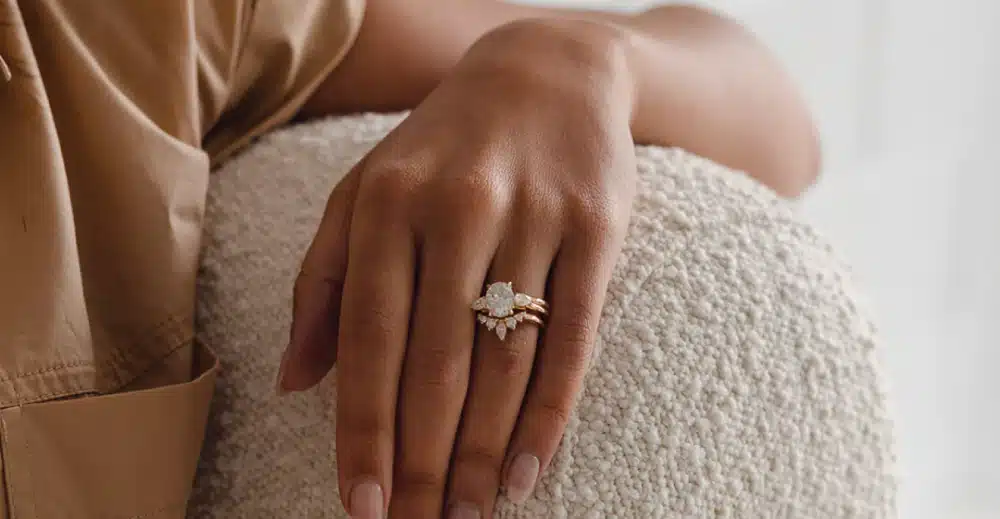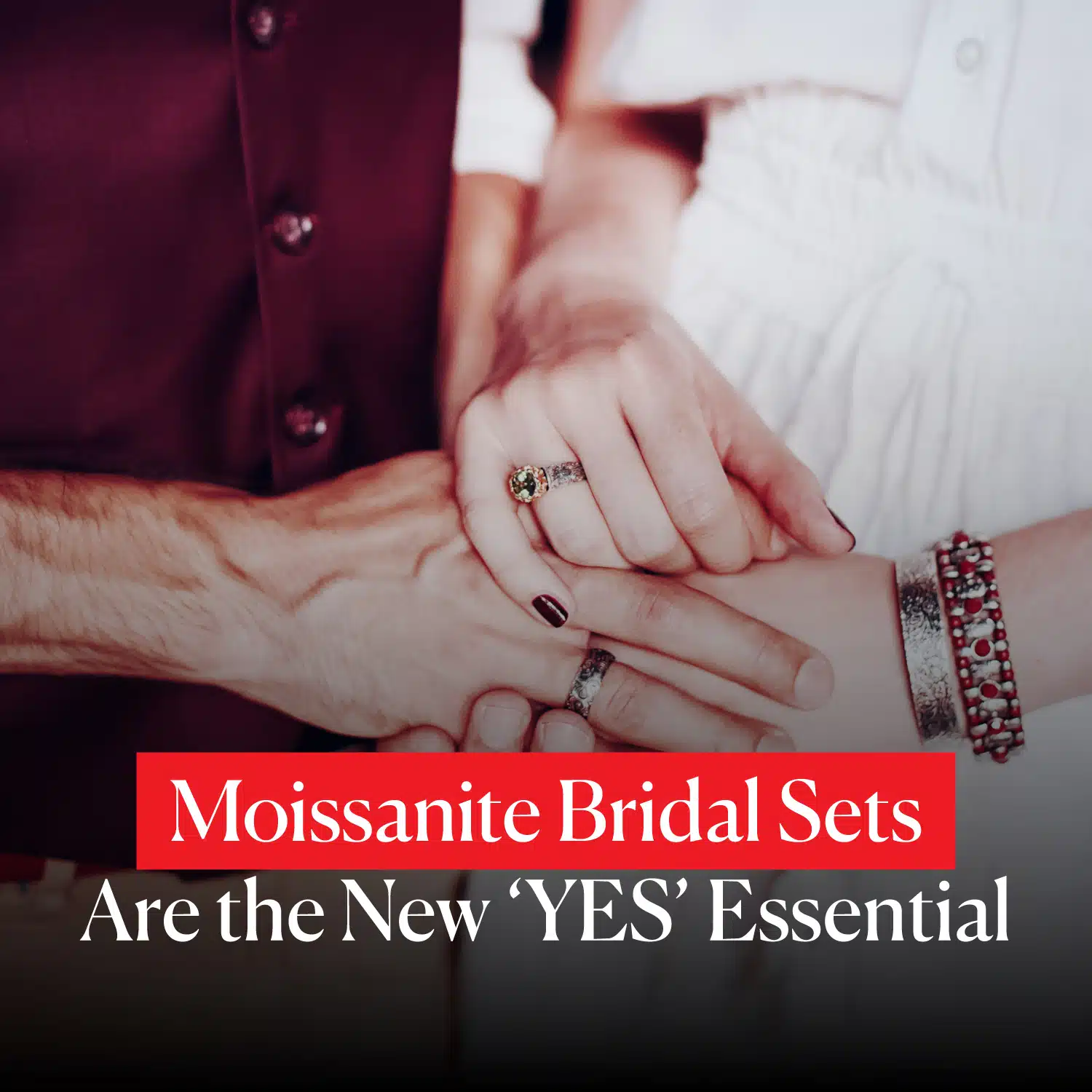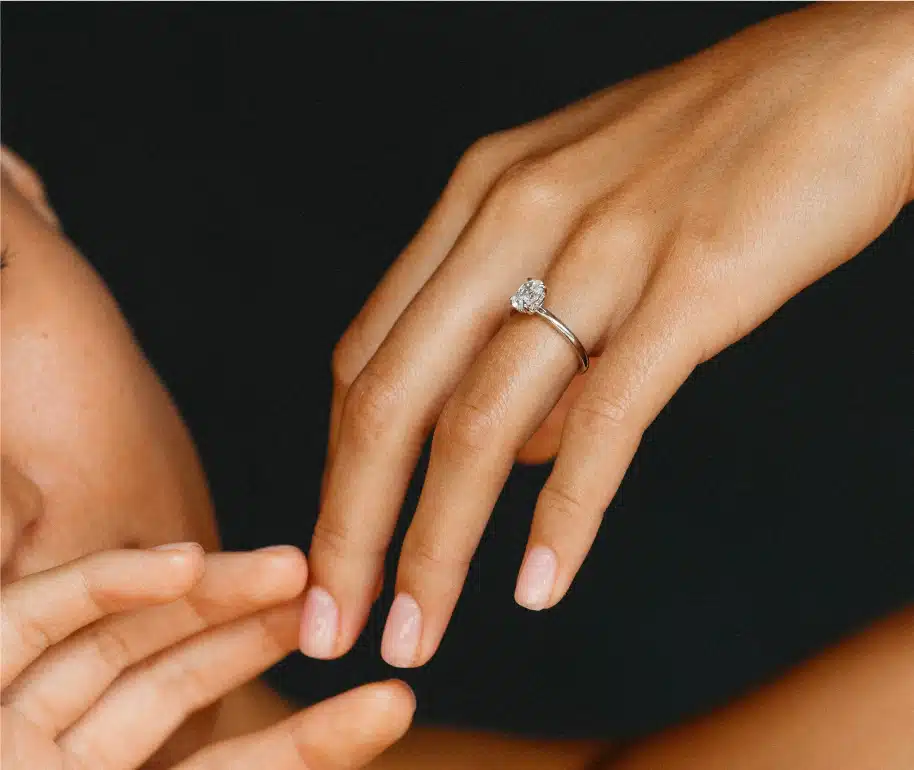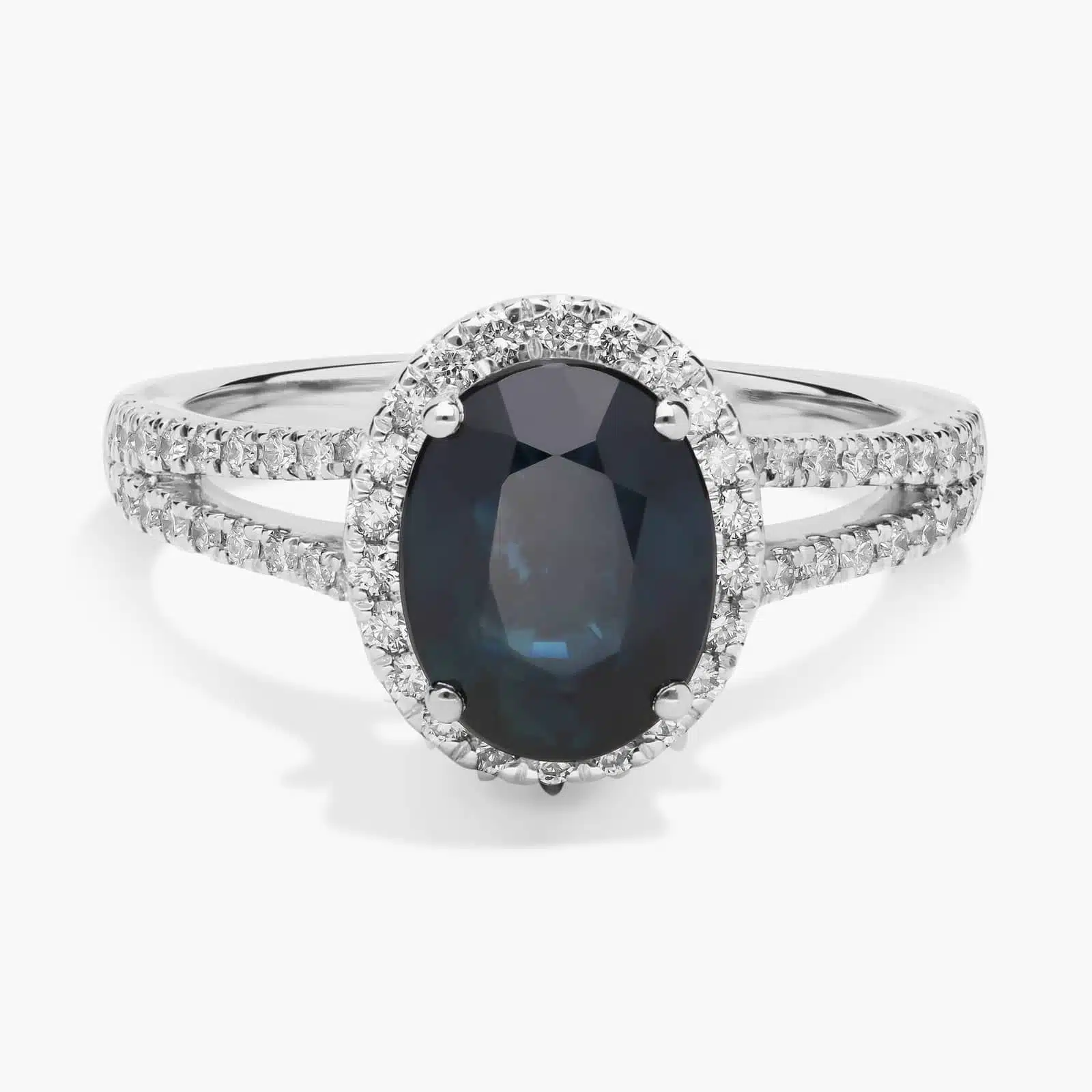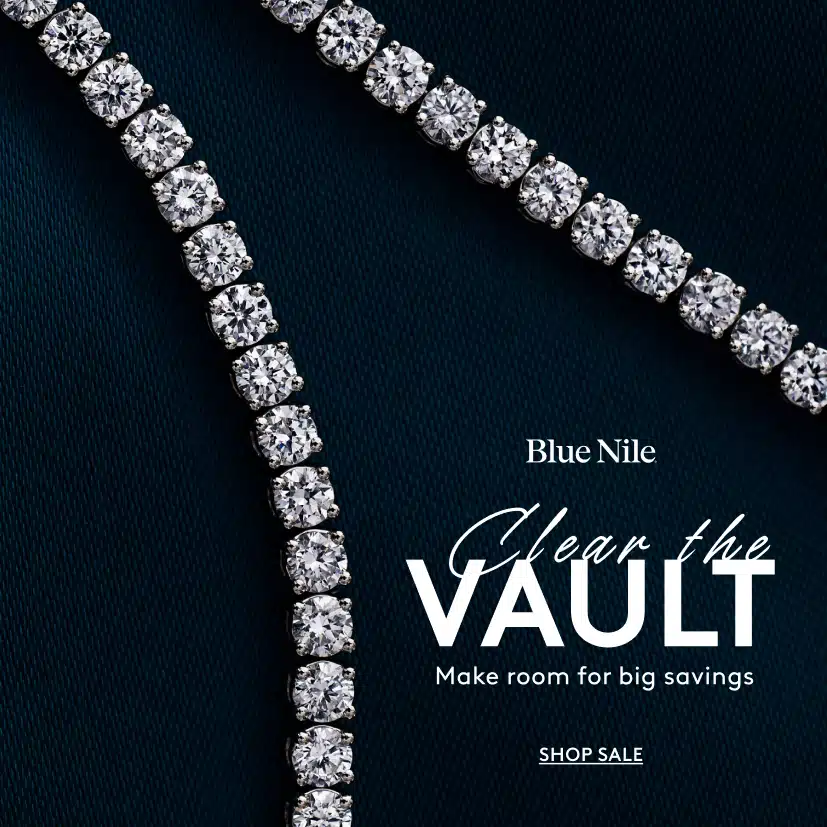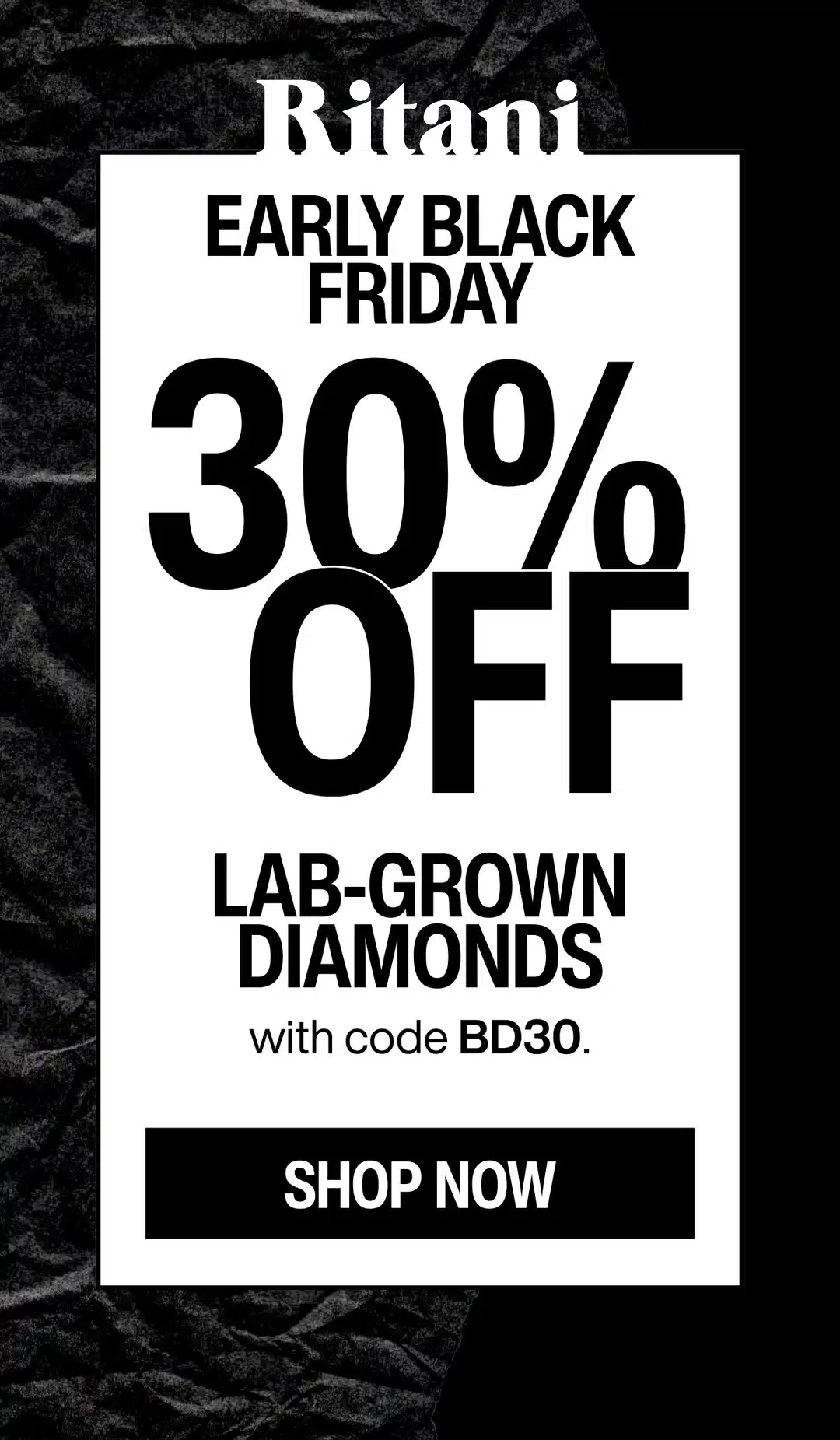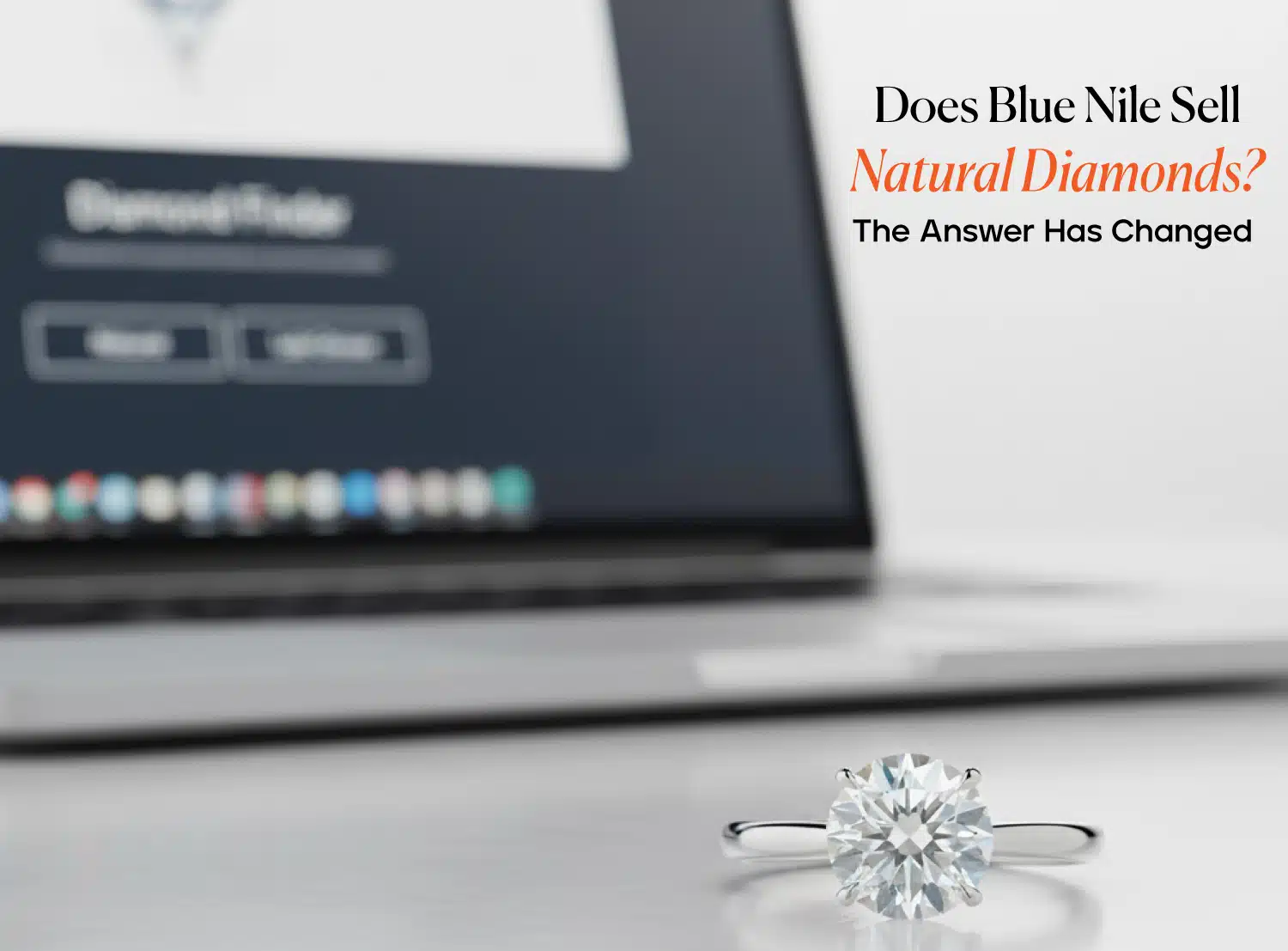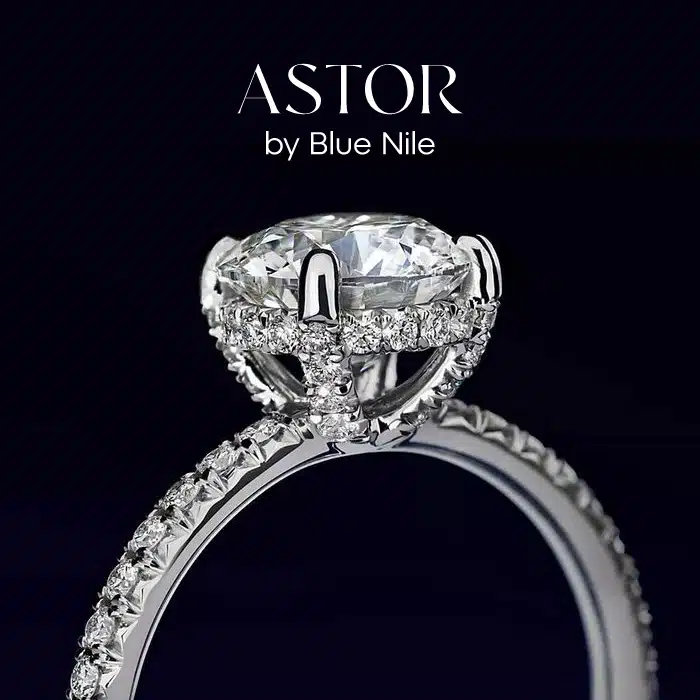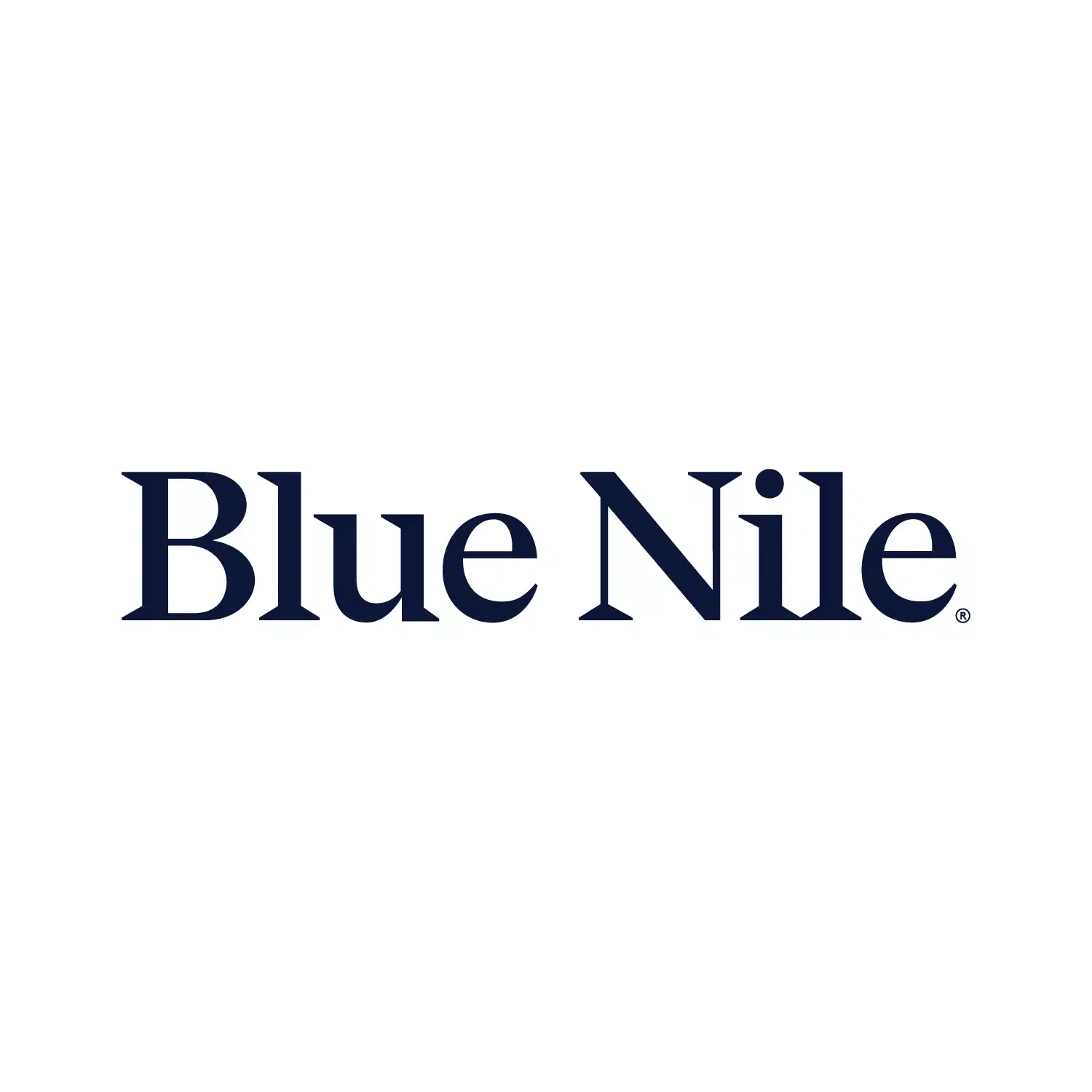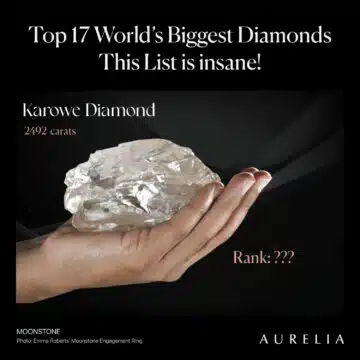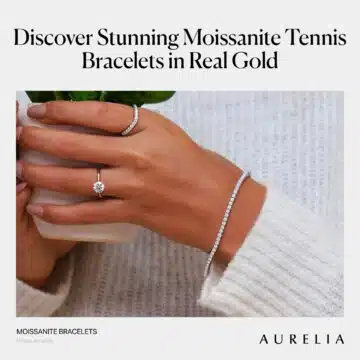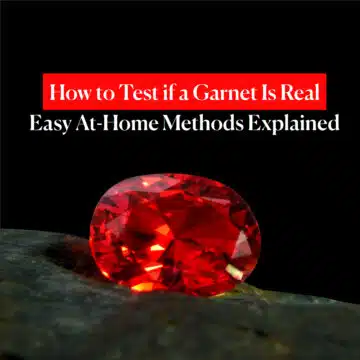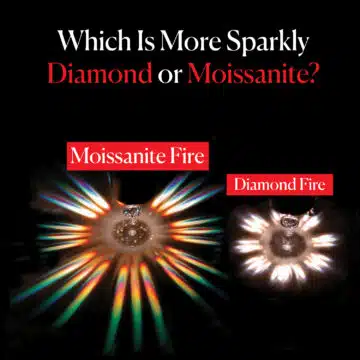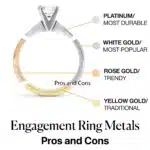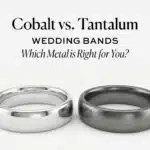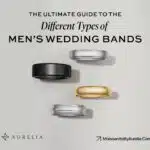Yes, Blue Nile sells one of the world’s largest inventories of natural, earth-created diamonds. The prominent addition of lab-grown diamonds to their website has created confusion, but their core business as a top-tier natural diamond retailer is stronger than ever.
Best Deal Of The Year – Final Days
Blue Nile’s “Clear The Vault” is ON.
Shop Fine Jewelry Upto 70% OFF.
*Exclusions may apply. See Blue Nile for complete details.
I’m Mehedi, and I know that seeing “Lab-Grown” so boldly on Blue Nile can make you pause and ask, “Am I in the right place?” It’s a fair question. My goal is to turn you into a master of their powerful search tool.
We’re going to pull back the curtain on every single filter and slider so you can navigate their site with total confidence, knowing exactly how to find the perfect natural diamond you’re looking for.
First Things First: Choosing the “Natural” Diamond Vault
Before you even think about carat weight, color, or the sparkle of a diamond, there’s one click on Blue Nile’s website that changes absolutely everything. Right at the top of their Diamond Finder tool, you’ll see two buttons: “Natural” and “Lab-Grown.”
Think of these as doors to two completely separate, parallel vaults. What’s inside one is not inside the other. The click you make here determines the entire inventory you’ll be searching through, and it’s the most common place where shoppers get confused.
To make an informed choice, you need to know exactly what’s behind each door:
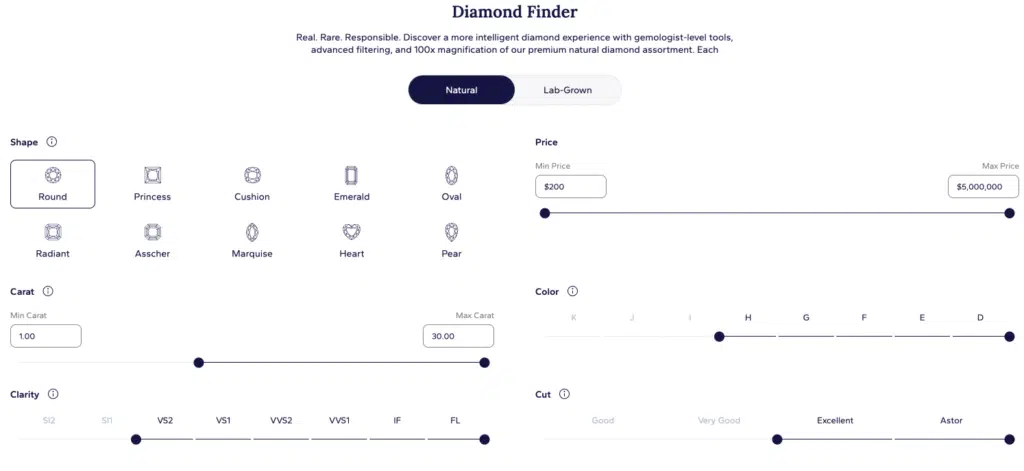
The “Natural” Vault:
This is the inventory that Blue Nile was built on. It contains the vast selection of blue nile natural diamonds that were formed over billions of years, deep within the earth’s mantle.
These are the traditional, timeless stones that have been cherished for centuries, each with a unique history as old as the planet itself. When you choose this option, you are exclusively looking at earth-created diamonds.
The “Lab-Grown” Vault:
This inventory contains diamonds that are scientifically, chemically, and visually identical to their natural counterparts but were created using advanced technology in a modern lab. They offer incredible value, often allowing you to purchase a much larger stone for the same budget.
This distinction naturally leads to the most important follow-up question: are blue nile diamonds real in both categories? The answer is a definitive yes. A lab-grown diamond is a real diamond, not a fake like a cubic zirconia. To fully understand the science and the difference, you can read our detailed guide right here: Are Blue Nile Diamonds Real?.
For the rest of this guide, we are going to walk through the door to the “Natural” vault. We’ve clicked that button, and every filter we discuss from here on out will be used to pinpoint the perfect earth-created bluenile diamond for you.
Finding Your Diamond’s Soul: A Guide to the 4 Cs Filters
Now that we are safely inside Blue Nile’s “Natural” diamond vault, we can get to the exciting part. You’re about to be faced with hundreds of thousands of diamonds. The key to not getting overwhelmed is to realize that the filters on the left side of your screen are your best friends.
They are the tools that let you tell the website, “Show me only the diamonds that fit my standards and my budget.”
These first and most important filters are the 4 Cs: Cut, Color, Clarity, and Carat. Mastering these isn’t just a technical exercise; it’s the art of finding the soul of your diamond. Let’s go through each one, filter by filter, so you can use them like an industry pro.
Shape: Defining Your Ring’s Style
The very first filter you’ll likely use is Shape. This isn’t one of the official 4 Cs, but it’s the foundational choice that dictates the entire personality of your ring.
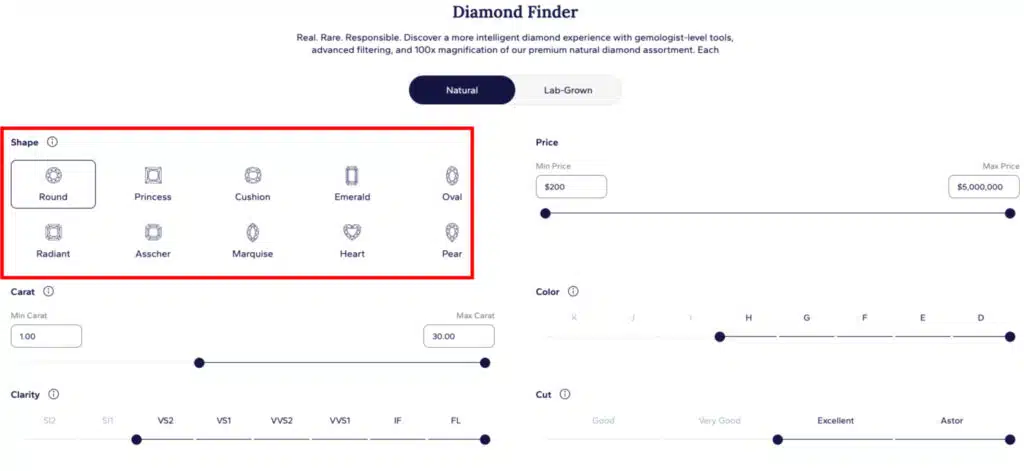
This is your chance to choose the silhouette that you or your partner will be looking at for a lifetime.
How the Filter Works on Blue Nile
This is the most straightforward filter. You are presented with clear icons for the 11 most popular diamond shapes. You simply click on the one that catches your eye.
- Round
- Princess
- Cushion
- Emerald
- Oval
- Radiant
- Asscher
- Marquise
- Heart
- Pear
Mehedi’s Insider Advice: The “So What?” of Shape
The shape you choose has real-world consequences beyond just style. It directly impacts the diamond’s perceived size, its sparkle, and its price. For example, a classic Round Brilliant Cut diamond is engineered to produce the most intense sparkle, but it’s also the most expensive shape per carat.
In contrast, “fancy shapes” like an Oval Cut or a Pear have a larger surface area, which means a 1-carat Oval will look noticeably bigger on the finger than a 1-carat Round. This is a fantastic “spready” effect that gives you a bigger look for your budget. You can learn more about which shapes have the most impact in our guide to What Shape Diamond Looks the Largest.
Pro-Tip: If you love clean, architectural lines, explore an Emerald Cut diamond or its square cousin, the Asscher Cut. If you love fiery sparkle and a modern look, a Cushion Cut diamond is an amazing choice. For a complete overview of all your options, our Diamond Shapes Guide is the perfect place to start.
Read Our 5-Star Blue Nile Review
Check our comprehensive Blue Nile review to learn why we rated Blue Nile 5 stars for their exceptional quality and value.
Carat: More Than Just Size
Carat is the movie star of the 4 Cs—it’s the one everyone knows by name. But it’s also the one most people get wrong. Understanding this filter is key to managing your budget and expectations.
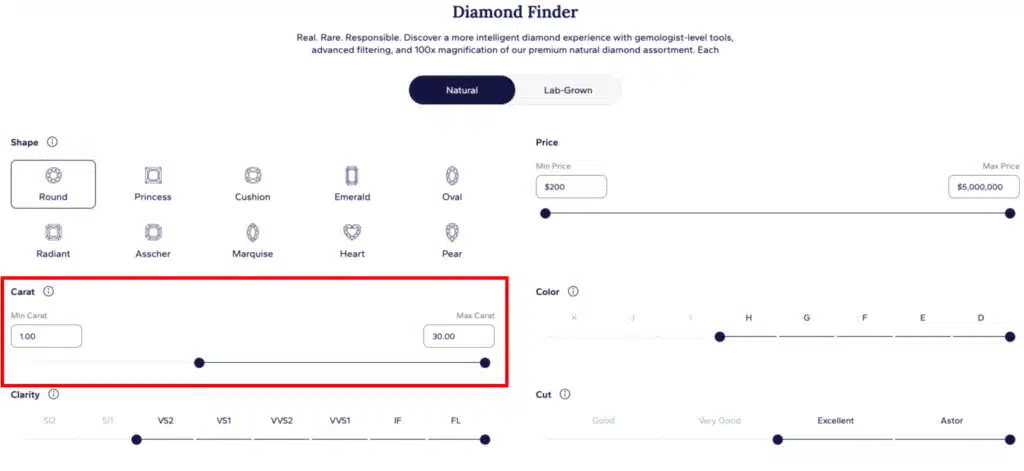
How the Filter Works on Blue Nile
Blue Nile gives you two ways to control carat weight. You can either drag the simple slider to set a general range (e.g., 0.90 to 1.10), or for much more precision, you can type your exact minimum and maximum values into the boxes. I always recommend using the boxes.
Mehedi’s Insider Advice: The “So What?” of Carat
Here’s the secret: Carat is a measure of weight, not visual size. One carat equals 200 milligrams. While a heavier diamond will of course be a larger diamond, the shape you choose (as we discussed above) dramatically affects how big that carat weight looks.
To see this in action, check out our Diamond Carat Size Chart to visualize how different carat weights appear on the hand.
The price of a diamond doesn’t just increase with carat weight—it jumps exponentially at certain “magic marks” like 1.0 carats, 1.5 carats, and 2.0 carats. This is purely due to demand; the desire to own a “one-carat” diamond is so high that there’s a huge price premium once you hit that number.
Pro-Tip: “Buy Shy” and Save a Fortune.
This is my single biggest money-saving tip. Instead of searching for a 1.0-carat diamond, set your max carat filter to 0.95. Or for a 2.0-carat, search up to 1.90. These “under-sized” diamonds are visually indistinguishable from their magic-mark counterparts, but they can be 15-25% cheaper.
No one can see a 0.05-carat difference, but your bank account absolutely will. This is the smartest way to shop for a diamond, period.
Best Deal Of The Year – Final Days
Blue Nile’s “Clear The Vault” is ON.
Shop Fine Jewelry Upto 70% OFF.
*Exclusions may apply. See Blue Nile for complete details.
Color: The Hunt for Whiteness
When we talk about “Color” in a white diamond, we are actually talking about the absence of color. The GIA grades diamonds on a scale from D to Z, where D is as colorless (and rare) as a drop of pure water.
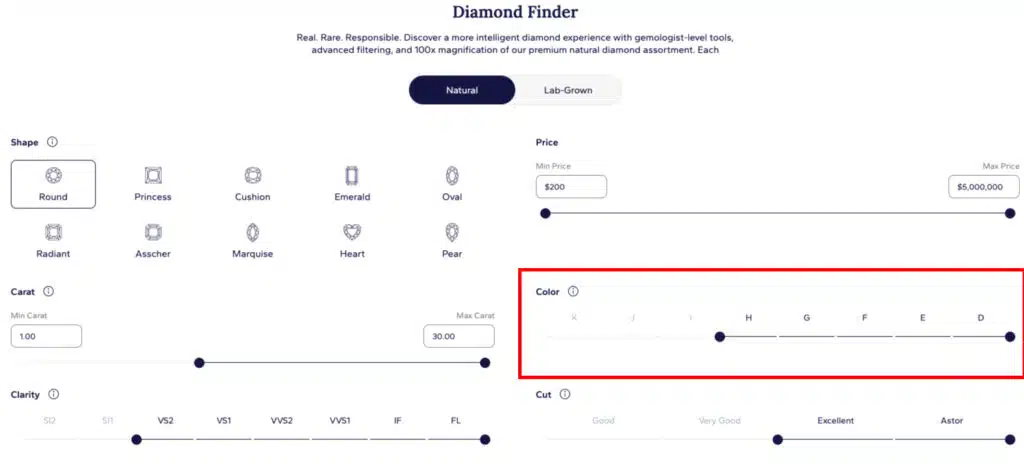
How the Filter Works on Blue Nile
The color slider lets you select a range along the GIA scale. For natural diamonds, you can select from the top D grade all the way down to a K.
| Color Grade | GIA Category | What It Means for You |
| D-E-F | Colorless | The rarest, purest white. A premium price for icy perfection. |
| G-H-I-J | Near Colorless | The absolute sweet spot for value. Appears white to the eye. |
| K | Faint Color | Will show a slight warmth, which some people prefer. |
Mehedi’s Insider Advice: The “So What?” of Color
The price difference between a D Color Diamond and a G Color Diamond is enormous. The visual difference? To the naked eye, once it’s set in a ring, it’s almost impossible to tell them apart. Your goal isn’t to buy a D-color diamond; your goal is to buy a diamond that looks white.
A G-color or even an H-color diamond offers incredible value because you’re not paying for a level of perfection that you can’t see.
Pro-Tip: Match Your Color to Your Metal.
The color of your ring’s band has a huge impact on how the diamond’s color is perceived.
- For Platinum or White Gold: Stick to G or H color. An I-color diamond might begin to show a very slight hint of contrast against the bright white metal.
- For Yellow or Rose Gold: You can safely go down to an I-color or even a J-color diamond. The warm hue of the gold band will reflect into the diamond, making it appear whiter and saving you a significant amount of money.
Clarity: Gauging a Diamond’s Purity
A diamond’s clarity grade is a measure of its internal purity. Almost every diamond has tiny imperfections known as inclusions (internal) or blemishes (external). Clarity is graded based on the size, number, and location of these characteristics when viewed under 10x magnification.
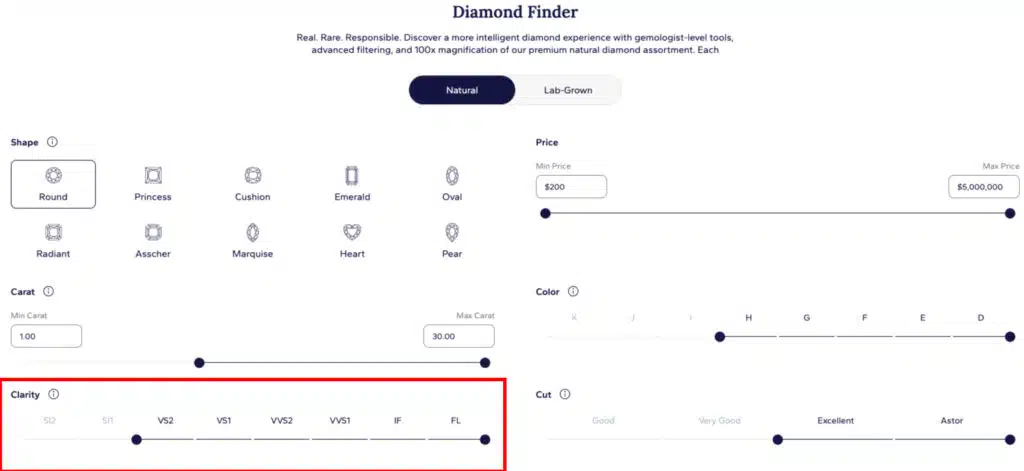
How the Filter Works on Blue Nile
The clarity slider takes you from SI2 (Slightly Included) at the bottom all the way up to FL (Flawless) at the top.
| Clarity Tier | What It Means | Insider Take |
| FL, IF | Flawless, Internally Flawless | The pinnacle of rarity. No inclusions under 10x magnification. |
| VVS1, VVS2 | Very, Very Slightly Included | Inclusions are extremely difficult for a trained grader to see. |
| VS1, VS2 | Very Slightly Included | The “sweet spot.” Inclusions are minor and not visible to the naked eye. |
| SI1, SI2 | Slightly Included | Can be great value, but require careful inspection to ensure they’re “eye-clean.” |
Mehedi’s Insider Advice: The Goal is “Eye-Clean,” Not Flawless.
Unless you plan on carrying a jeweler’s loupe with you at all times, there is no reason to pay the massive premium for a Flawless or VVS diamond. Your mission is to find a diamond that is “eye-clean”—meaning it has no inclusions that are visible to the naked eye.
The VS1/VS2 range (which we cover in our VS1 vs VS2 Diamond guide) is the absolute sweet spot. These diamonds have inclusions that are only visible under magnification, giving you a visually perfect stone without the flawless price tag.
This is, without question, the best diamond clarity for getting great value.
Diamond IQ Test: Natural or Lab-Grown?
Two identical diamonds: GIA Certified, 1.51ct, D Color, VVS1, Ideal Cut. One is natural ($16,530), the other is lab-grown ($2,390). Choose the diamond you like better and see if you can match it to its origin.
Pro-Tip: Clarity Hides Differently in Different Shapes.
Inclusions are much harder to see in brilliant-cut diamonds like Rounds, Cushions, and Princess cuts due to their sparkle. In step-cut diamonds like Emeralds and Asschers—which have large, open facets like a hall of mirrors—inclusions can be much more obvious.
For an Emerald or Asscher cut, I would recommend sticking to a VS1 clarity or higher to be safe.
Cut: The Filter That Controls the Sparkle
I’ve saved the most important for last. Cut is king. It does not refer to the diamond’s shape, but to the precise angles, proportions, and facets that have been cut into the stone by a master craftsman.
Cut is the only one of the 4 Cs that is controlled by human hands, and it is the single greatest factor in a diamond’s brilliance, fire, and sparkle.
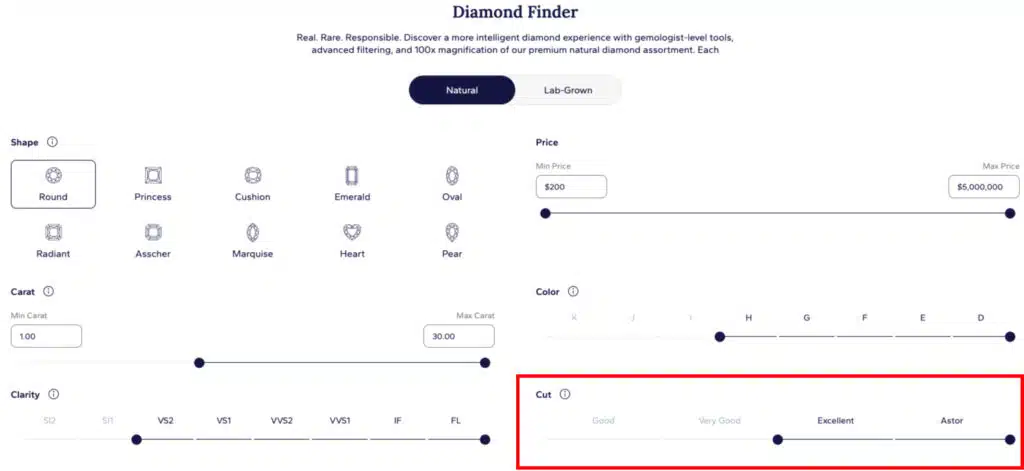
How the Filter Works on Blue Nile
The cut filter is a simple slider ranging from “Good” to “Excellent,” with their signature “Astor by Blue Nile” at the very top.
Mehedi’s Insider Advice: Never, Ever Compromise on Cut.
From my years in the trade, this is the most important piece of advice I can give you. The cut of a diamond is what unleashes its light. A poorly cut diamond is a dull diamond, regardless of its color or clarity.
I’ll put it this way: An H-color, VS2-clarity diamond with an ‘Excellent’ cut will look infinitely more brilliant and beautiful than a D-color, Flawless diamond with a ‘Good’ cut. Cut is the king of sparkle, and it’s where you should never compromise.
On the Blue Nile filter, you should set the slider to “Excellent” (or “Ideal” on some reports) and never look back. This is the single best way to guarantee you get a stunning, fiery diamond. To see a visual breakdown of why these angles matter, you can explore our detailed Diamond Cut Chart.
For those who want the absolute best of the best—the top 1% of sparkle—Blue Nile has a premium option called Astor by Blue Nile™.
These are diamonds that already have an “Excellent” grade but are further vetted for superior light performance. They carry a premium, but guarantee an elite level of brilliance.
Astor by Blue Nile is the collection for the data-driven buyer who demands scientific proof of performance. These diamonds are selected from the top 0.1% of Blue Nile's massive inventory, representing the most elite stones they offer. The collection's foundation is a unique dual-certification system that removes all guesswork, providing objective, third-party validation of a diamond's sparkle.
WHAT WE LOVE ABOUT THIS COLLECTION:
- Exclusive Dual Certification: Every diamond includes a GIA report plus a GemEx Light Performance report.
- Scientific Brilliance Scores: The GemEx report provides objective, numerical scores for Brilliance, Fire, and Sparkle.
- Ultimate Curation: Represents the absolute pinnacle of Blue Nile's inventory—only one in a thousand diamonds makes the cut.
- Guaranteed Performance: The strict vetting process guarantees an elite level of light performance, backed by data.
- The "Peace of Mind" Purchase: Perfect for buyers who want the proven best without needing to become a gemology expert themselves.
- Backed by Blue Nile's Upgrade Program: Your Astor diamond's full value can be applied toward a future upgrade.
The Expert Level: Using Advanced Filters to Maximize Value
If the 4 Cs are the engine of your car, these next filters are the fine-tuning, the alignment, and the onboard computer. They control the final, nuanced aspects of a diamond’s performance and appearance.
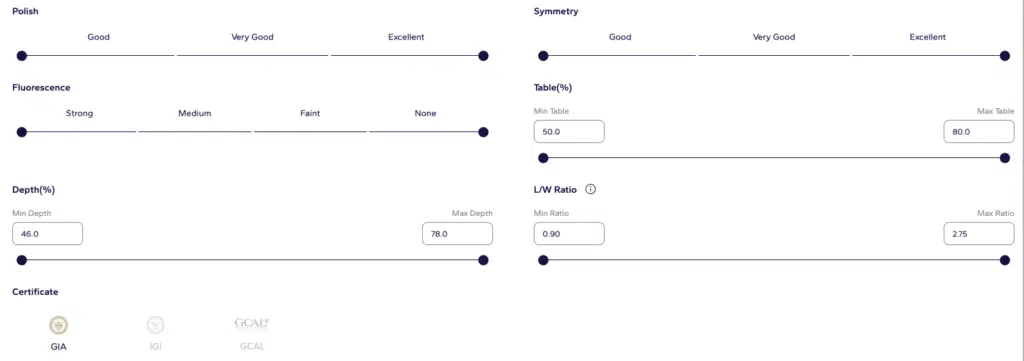
By mastering these, you ensure that the excellent diamond you selected on paper is truly brilliant in person.
Polish & Symmetry: The Finishing Touches
After a diamond is cut into its shape and faceted, a craftsman puts the finishing touches on it. That’s Polish and Symmetry. They are often listed right alongside the main “Cut” grade on a GIA report.
How the Filter Works on Blue Nile
You’ll see two separate sliders, one for Polish and one for Symmetry, each with a range from “Good” to “Excellent.”
Mehedi’s Insider Advice: The “So What?” of These Grades
These two factors are like the fit-and-finish of a luxury car. They have a subtle but important impact on the diamond’s overall light performance.
- Polish: This grade refers to the smoothness and quality of the diamond’s surface. Think of it like a perfectly waxed car versus one with a rough paint job.
A “Good” polish might have microscopic scratch lines from the polishing wheel that can slightly blur the light as it passes through, while an “Excellent” polish is pristine and flawless. - Symmetry: This grade measures the precision of the facet alignment. Are the facets shaped and placed exactly where they should be? Are they pointing perfectly toward one another to create that “hall of mirrors” effect?
Excellent symmetry ensures that light bounces around inside the diamond exactly as it should, maximizing its return to your eye as sparkle.
Pro-Tip: Don’t Settle for Less Than “Very Good.”
This is a simple rule that will serve you well. A diamond with an Excellent cut grade should not be handicapped by subpar finishing touches. When you’re using the Blue Nile filters, set both the Polish and Symmetry sliders to a minimum of “Very Good.”
Ideally, for a round brilliant, you’ll want to see “Excellent” across the board for Cut, Polish, and Symmetry (often called “Triple Ex” or “3EX” in the trade). This is a hallmark of a truly well-crafted stone.
Best Deal Of The Year – Final Days
Blue Nile’s “Clear The Vault” is ON.
Shop Fine Jewelry Upto 70% OFF.
*Exclusions may apply. See Blue Nile for complete details.
Fluorescence: Friend or Foe?
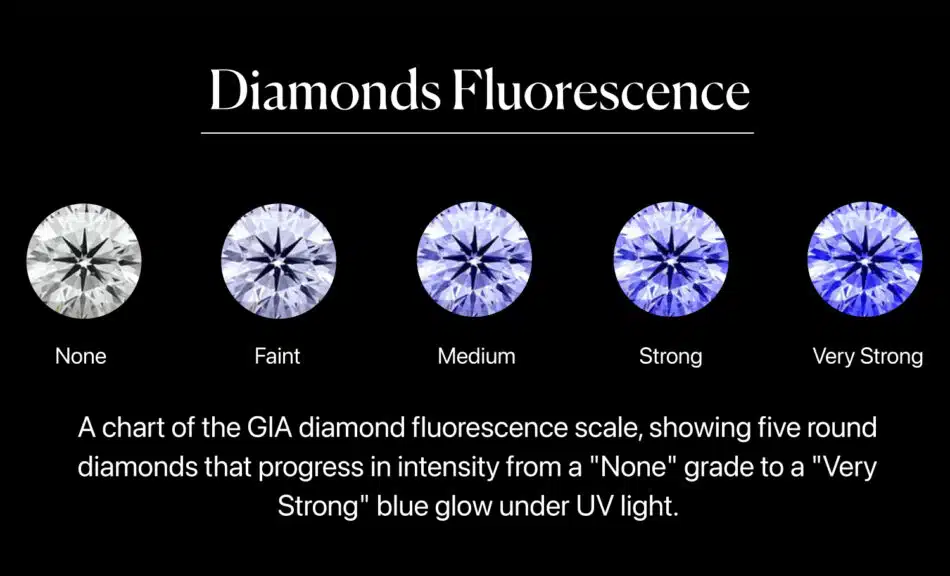
Fluorescence is one of the most misunderstood and debated characteristics of a diamond. It’s a natural phenomenon that causes some diamonds to emit a soft glow (usually blue) when exposed to ultraviolet (UV) light, like a blacklight or even strong, direct sunlight.
How the Filter Works on Blue Nile
You have a slider that lets you choose from “None,” “Faint,” “Medium,” and “Strong.”
Mehedi’s Insider Advice: The “So What?” of Fluorescence
For decades, fluorescence got a bad rap. The concern was that Strong Blue Fluorescence could, in a very small percentage of cases (less than 2%), cause a high-color (D-G) diamond to appear milky, hazy, or oily in daylight. Because of this perception, diamonds with Strong fluorescence are often traded at a discount.
However, the reality is that for the vast majority of diamonds, fluorescence has no visible effect at all on the diamond’s appearance. And sometimes, it can even be a good thing. To get a complete understanding of this complex topic, you can read our deep-dive in the Diamond Fluorescence: Flaw or Feature? guide.
Pro-Tip: Use Fluorescence to Your Advantage.
Here’s a true insider’s trick to save money. If you are shopping for a diamond in a lower color grade, like an I, J, or K-color, a “Medium Blue” fluorescence can actually be beneficial.
The blue color can counteract some of the faint yellow body color of the diamond, making it appear whiter and brighter to the eye. You get a diamond that looks a full color grade higher, but you pay a discounted price for it. For the ultimate peace of mind and no-risk option, simply set the filter to “None” or “Faint.”
Table & Depth %: The Ratios for Optimal Sparkle
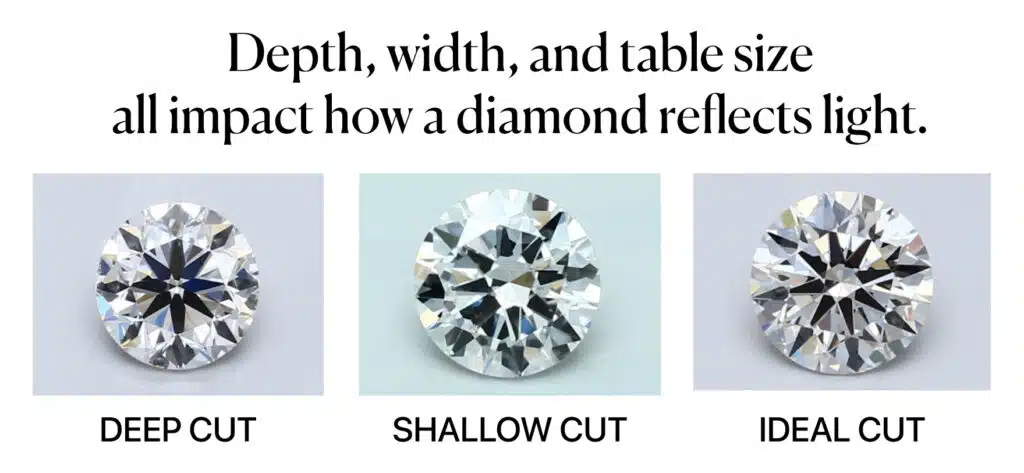
Don’t worry, you don’t need to be a math whiz to use these filters. These two percentages—Table and Depth—are simply key proportional measurements that gemologists use to predict how well a diamond will handle light. They are a huge component of the overall GIA Cut Grade.
How the Filter Works on Blue Nile
You have two separate sliders with min/max boxes for both “Table %” and “Depth %”.
Mehedi’s Insider Advice: The “So What?” of These Ratios
Think of a diamond as a complex system of mirrors. For it to sparkle intensely, its proportions must be just right to bounce light around internally and then shoot it back out of the top.
- Depth %: This is the diamond’s height (from top to bottom) divided by its width. If a diamond is cut too deep, light leaks out of the bottom, creating a dull, dark center (an “iceberg” diamond where all the weight is hidden at the bottom). If it’s cut too shallow, the light passes straight through, creating a glassy “fish-eye” effect with no sparkle.
- Table %: This is the width of the top, flat facet (the “table”) divided by the total width of the diamond. It’s the main window into the stone. If the table is too large, it can limit the diamond’s ability to create colorful “fire.” If it’s too small, it can limit the white-light “brilliance.”
Learn more about Diamond Table Secrets here.
For a round brilliant diamond, the industry has identified a “sweet spot” for these percentages that produces the most exceptional sparkle.
| Proportions (Round Diamond) | The “Excellent” Sweet Spot |
| Table % | 54% to 60% |
| Depth % | 59% to 62.5% |
Pro-Tip: Use These as a Final Check.
After you have set your main Cut filter to “Excellent,” you can use the Table and Depth filters to narrow down your results to only include the “best of the best” within that top grade. Dialing in these ideal proportions is how you can ensure you are getting a GIA Excellent diamond that is truly a premium, super-ideal performer.
L/W Ratio: Perfecting the Shape
This is an absolutely critical filter that is often overlooked, but it is the secret to getting a beautifully proportioned fancy-shaped diamond. This filter has no effect on a Round diamond, but for everything else, it’s a game-changer.
How the Filter Works on Blue Nile
A simple min/max box allows you to input your desired Length-to-Width Ratio.
Mehedi’s Insider Advice: The “So What?” of L/W Ratio
The L/W Ratio determines the diamond’s outline and prevents you from accidentally buying an odd-looking stone. Imagine an Oval diamond—you probably picture a graceful, elongated shape. But if its L/W ratio is too low, it can look short, chubby, and almost round. A high L/W ratio can make it look too long and skinny.
This applies to all non-round shapes:
- An Emerald or Radiant cut’s ratio determines if it’s a classic rectangle or a perfect square.
- A Pear or Marquise cut’s ratio dictates how elegant or stout it appears.
Here are the widely accepted “sweet spot” L/W ratios for popular shapes:
| Fancy Shape | Ideal L/W Ratio |
| Oval | 1.35 to 1.50 |
| Emerald | 1.30 to 1.45 |
| Pear | 1.50 to 1.70 |
| Marquise | 1.85 to 2.00 |
| Radiant/Cushion | 1.15 to 1.25 (for rectangular) |
Pro-Tip: Before you even start your search for an Oval, Emerald, or any other fancy shape, put these ideal ratio numbers into the filter. This will immediately remove all the awkwardly shaped stones from your search, saving you time and ensuring you end up with a visually stunning, perfectly proportioned diamond.
Read Our 5-Star Blue Nile Review
Check our comprehensive Blue Nile review to learn why we rated Blue Nile 5 stars for their exceptional quality and value.
Certificate: Your Non-Negotiable Proof
This last filter is your ultimate quality control. The certificate, or grading report, is the official document from a gemological lab that validates everything we’ve just discussed—from the 4 Cs to the fluorescence.
How the Filter Works on Blue Nile
You are presented with icons for the labs Blue Nile uses, primarily GIA and IGI.
Mehedi’s Insider Advice: The Bedrock of Your Purchase
From my GIA training and years in the industry, I can tell you this: an uncertified diamond is a diamond with no verifiable identity. A diamond’s certificate is the absolute bedrock of its value and the foundation of your trust.
This is a huge part of the Blue Nile reputation; they built their brand on selling diamonds certified by the world’s most respected labs.
- GIA (Gemological Institute of America): This is the gold standard. They are a non-profit organization with the strictest and most consistent grading standards on the planet. For a natural diamond, you should consider a GIA report as non-negotiable.
- IGI (International Gemological Institute): IGI is another highly respected lab. While GIA is the leader for natural stones, you will find IGI is a prominent and reliable certifier, and you can trust their reports as well. We explore them further in our IGI Diamond Certification article.
Pro-Tip: Make It Your First and Last Filter.
When you start, ensure GIA is selected. When you find a diamond you love, the very first thing you should do is click to view its actual certificate.
This is the ultimate proof that verifies every quality you have selected, and it’s the core reason that when you ask, “is Blue Nile trustworthy,” the answer for their certified diamonds is a confident yes. The commitment to selling Blue Nile GIA certified diamonds is their promise of quality to you.
Deal Alert: Black Friday! Get up to 40% OFF fine jewelry at Blue Nile !
One In A Lifetime Sale: “Clear The Vault” – Get up to 70% OFF on select jewelry at Blue Nile !
Exclusive Offer: Lock in a gorgeous ring! Get up to 20% OFF engagement ring settings at James Allen .
Your Natural Diamond Questions, Answered
You’ve mastered the tools, but a few key questions always come up when making a final decision. As your friend in the business, I want to tackle these directly to ensure you have complete confidence from every possible angle.
Verdict: Is Blue Nile Still a Top Choice for Natural Diamonds?
After walking through every intricate filter and demystifying the technical jargon, we can now answer the core question with total certainty: Yes. Blue Nile is not just a good choice for natural diamonds; it remains an absolutely elite, top-tier destination for them.
The presence of lab-grown diamonds hasn’t weakened their natural diamond inventory—it has simply given buyers more choice. The key takeaway is that you are always in complete control. The powerful “Diamond Finder” tool we’ve just dissected isn’t a source of confusion; it’s a tool of empowerment.
It’s a transparent system that allows you to act as your own expert, dialing in the exact specifications you want and seeing precisely how those choices affect the price.
Their entire business model and the solid Blue Nile reputation were built on the foundation of selling GIA-certified natural diamonds. That commitment has not wavered. The unparalleled selection of earth-created stones, backed by the industry’s most respected grading reports, is still the heart and soul of their business.
So, if you were worried that you were in the wrong place, you can set that concern aside. When you click that “Natural” button, you are tapping into one of the deepest and most trustworthy inventories of natural diamonds on the planet.
Blue Nile is one of the biggest and most recognized online jewelry retailers, offering an extensive and exclusive inventory. Their high-resolution images are improving and getting closer to the quality offered by James Allen, while their prices remain highly competitive. Right now, Blue Nile offers up to 30% savings on jewelry during a limited-time sale.
WHAT WE LOVE ABOUT THEM:
- 30-day no-questions-asked return policy, with a prepaid shipping label provided by Blue Nile.
- Lifetime warranty on all purchases.
- Free shipping on every order.
- Complimentary services every six months, including prong tightening, repolishing, rhodium plating, and cleaning.
- Insurance appraisal included with your purchase.
- One free resizing within the first year.
- High-quality images available for roughly half of their diamond selection.
- 24/7 customer service support.
- Full credit toward future upgrades, as long as the new item is at least double the value.
- Best-in-class order fulfillment process.
Ultimately, the answer to the question “is blue nile reputable” when it comes to buying natural diamonds is a definitive yes. You have the tools, you have the knowledge, and you have the GIA certificates to prove the quality of anything you find.
To see how all these factors come together in a complete picture of their customer service, shipping, and unboxing experience, I highly recommend reading our full, updated Blue Nile Reviews for 2025.
And if you want to dive even deeper into the core trust and safety signals of their business, our complete breakdown, Is Blue Nile a Reputable Company?, will give you that final piece of mind.
Continue Your Research Journey
You now have the expert-level knowledge to master Blue Nile’s search filters and pinpoint a beautiful, high-quality natural diamond. But your journey doesn’t have to stop here. The next step is to broaden your understanding of the diamond market itself, so you can make your final choice with absolute, unshakable confidence. These hand-picked guides are the perfect place to start.
Master the Diamond Essentials
- The Foundation of All Diamond Buying: Our No-Nonsense Diamond Grading Chart (The 4 Cs)
- Go Deeper on Sparkle: Understanding Hearts and Arrows Diamonds
- A Deep-Dive on Value: What is the Best Diamond Clarity for Your Money?
Practical Buying Guides & Tools
- Visualize Your Perfect Diamond: A Visual Diamond Carat Size Chart
- Shop Smarter, Not Harder: The Best Times to Buy a Diamond Ring
- Explore All Your Options: The Best Places to Buy Engagement Rings Online
In-Depth Retailer Reviews
- Get the Full Picture: The Complete Blue Nile Review for 2025
- See How the Main Competitor Stacks Up: The Ultimate James Allen Review


